The Pandemic and the Yemeni Peace Process (Risk review report)
In the face of the current pandemic, the international community and the concerned parties in Yemen must assemble to build a final, binding solution for the conflict.
If ever a country was a convoluted patchwork of actors, interests, and catastrophes, it is Yemen. The country has lost the better part of the last decade to political upheaval and socioeconomic collapse. What started as part of the Arab Spring as a protest against the government of then-President Ali Abdullah Saleh, has now turned into an eternal contest of conflicting interests and a bleak future for Yemeni citizens.
However, the current COVID-19 pandemic might ironically be a harbinger of peaceful times for Yemen. After more than five years of war and a severe humanitarian crisis, developments such as multiple ceasefire declarations by the Saudi-led coalition, plummeting oil prices, and a significant redirection of funds towards the domestic healthcare sectors of the coalition members might finally convince the warring parties to agree on a durable peace accord.
Background of the conflict
The regime of ex-President Saleh – which lasted for over three decades – was known to be corrupt, abusive, and nepotistic. In 2011 as the Arab Spring took over parts of the MENA region, Yemen too saw massive popular protests particularly against the widespread unemployment and economic failures in the country. President Saleh was eventually forced to step down from power in 2012. He was offered legal immunity – as part of the ‘GCC Initiative’ – in return for the transfer of power to Abdrabbuh Mansur Hadi, his erstwhile deputy. However, this move led to a political vacuum in Yemen. The Houthis (a political and armed group belonging to the minority Zaidi Shia community based mainly in Northern Yemen) and the Hirak (a separatist group of Southern Yemen), amongst other groups, opposed this move and the Houthis went on to capture the capital Sana’a in 2015. The Saudi-led coalition was formed primarily in response to this move. What the alliance envisaged would be a swift in-and-out action against the Houthis turned out to be an endless conflict that has cost Saudi Arabia (the coalition leader) money, workforce, attacks on its territory, and the humiliation of a conflict of interests with its coalition partner UAE.
The conflict in Yemen has not drawn nearly as much international attention and sympathy as the one in Syria. Yet, many international actors are mired in the battle. The US and the UK are the most prominent players given their role in providing the Saudi-led coalition with arms and intelligence. The US has both a commercial interest in selling weapons as well as a strategic interest in containing Iran as well as AQAP and ISIS, through its support for the coalition. Other countries such as France and Germany too played a similar role. Iran has been alleged to be supporting the Houthis ideologically as well as with training, funding, and arms. Other distant but major actors such as Russia, Turkey, and China have not been directly involved in the war. However, they are hopeful of making gains from its ruins. Russia, unsurprisingly, has a maritime and geopolitical interest in Yemen. It has supported the UAE-backed Southern Transitional Council in Yemen to have a degree of influence over the Southern Yemen coastline. China too seeks peace in Yemen – not only because post-war reconstruction will allow for lucrative deals, but also because disturbances in the strategic Gulf of Aden and Bab al Mandeb strait hinder Chinese trade with Africa and Europe.
Current status
While the ‘beginning of the end’ of this conflict has been regularly predicted since at least 2019, it seems that the COVID-19 pandemic might prove to be the final nail in the coffin. Two promising signs include recent announcements by (i) the Saudi-backed Yemeni govt. And the Southern separatists, in June, regarding a ceasefire to implement the 2019 Riyadh peace agreement; and (ii) by the Saudi-led coalition, in April, regarding a temporary unilateral ceasefire. Both announcements must, of course, be taken with a pinch of salt. The former came in the background of the takeover of the strategic Socotra Islands by Southern-backed forces. At the same time, the Houthis rejected the latter because Saudi bombings and blockades continue.
The current pandemic has led to some adverse outcomes for the Gulf region, and particularly for Saudi Arabia and UAE – the two primary members of the coalition. These include a record drop in the global oil demand and consequently in oil prices; large-scale return immigration of migrant/ex-pat labour in the Gulf; and a significant COVID-19 caseload that calls for the diversion of financial resources towards the domestic healthcare sector. Within Yemen, the Houthis have worked hard to suppress information on the COVID caseload; they have also forced shops and businesses to continue operating as usual so that they can profit from extortions. However, many sources have found that the virus is already spreading in the country and the healthcare system, which has already collapsed due to Yemen’s cholera outbreak, is practically unable to control this spread.
Hence, the conflict urgently needs to progress to the stage of peacebuilding and reconstruction. The primary focus needs to be on healthcare, potable water, govt—institutions such as the judiciary, military, banks, etc., free press, education, and employment generation.
A potential course for the future
Half a decade of war and many negotiations later, two things are evident – peace is neither going to be easy nor quick, and humanitarian concerns will be the last thing to drive peace home. Ultimately, financial and political incentives for the warring parties will be the key factor in negotiations. While the United Nations, mainly through the UN Special Envoy for Yemen Martin Griffiths, is already playing a pivotal role in monitoring and mediating in the conflict, it could also be advantageous if Oman is invited to be a principal negotiator. Oman is the only GCC member that did not join the Saudi-led coalition, and it shares cordial relations with Saudi Arabia, UAE, as well as Iran. Therefore, it has some degree of neutrality vis-à-vis this conflict.
Additionally, Oman has a personal stake in the resolution of the battle given its sizeable Western border with Yemen and its desire to guard against the inflow of Yemeni refugees and extremists. Oman has been a part of past negotiations on the Yemeni conflict – having proposed a Seven Point Plan in 2015 – thereby giving it a detailed context of the skirmish as well as the consultations. This is also necessary because the UN will not be trusted by all parties to be neutral and free from influence. Its recent delisting of the Saudi-led coalition from a blacklist for aggression against children has drawn flak. It is also evident in an organization like the UN, a recognized state will have a stronger say than non-state actors such as the Houthis or the STC – and especially when that state is backed by the USA.
What is crucial at present is an immediate stop to on-ground aggression. The viability of any ceasefire agreement or future peace accord rests on this. In the past, ceasefire announcements by the coalition have failed primarily due to the continuation of violence on the ground. Such a halt is today more conceivable than ever before, because the pandemic has made an expensive war even more difficult to finance. As discussed above, Saudi Arabia and UAE are faced with increased expenditure on their healthcare systems in the face of COVID-19, plummeting oil prices, and a large-scale return of migrants that formed the pillars of their economy. Even Iran, that is known to be financing the Houthis, is faced with the same problems and crippling American sanctions on top of that (since 2018), thereby restricting its financial capabilities. Given that these countries have to now rebuild their own (post-oil) economies with limited resources, it would be both fair to assume and easier to convince them to end this exorbitant warfare.
Once this can be achieved, the next goal would be to achieve a tripartite agreement between the Saudi-backed internationally-recognised Yemeni government, the Houthis, and the Southern Transitional Council (the so-called ‘separatists). This is the most necessary yet the most difficult step. The conflict in Yemen has been nothing but a contest for influence over the territory and institutions of Yemen. Therefore, no party would be willing to end the war without receiving its slice of the pie. Therefore, a transitional power-sharing arrangement between the Yemeni govt., the Houthis, and the STC is needed, who would each be responsible for post-conflict rebuilding of the territories under their control. This would be temporary until the reconstruction reaches a viable stage, and it should allow for fresh and standardized elections thereafter.
The longstanding grievances of the Houthis and the Southerners (and the myriad tribal, sectarian, and regional sub-groups under them) of discrimination on sectarian and regional grounds, respectively, must urgently be addressed by establishing a strong federal structure with regional autonomy. This is imperative for harmony in a socially heterogenous country like Yemen. However, merits, or the lack thereof, of secession (by the Southerners) must be mulled over. Not only will secession cause economic distress and a diplomatic challenge for Yemen’s neighbors, it will also put South Yemen in the precarious position of dealing with terrorist outfits alone (given their sizeable presence in Southern Yemen). Given that UAE has been supporting the STC and the idea of secession for some time now – seeing it as a potential zone of influence and unfettered access to strategic coastlines – the UN and Oman would have to work hard to convince UAE of the demerits of secession. For Saudi Arabia, too, dealing with one tricky neighbor would be easier than dealing with two (in the event of separation).
An inclusive division of powers such as this must be made conditional upon the immediate removal of obstacles put by all three parties in the process of aid procurement and distribution. Key ports such as Hodeidah, Aden, Ras Issa etc. should be monitored by the UN (such as the UNMHA in Hodeidah) and allow free passage of commercial goods and humanitarian aid – food grains, medicines and equipment, and healthcare workers. The Houthis must also be given the condition of ending manipulation of the business sector, before their demands can be met.
Another key factor of negotiations must be establishing a formal and unified Yemeni military that is inclusive of the various military subgroups in the country. At present, various militias have been controlling parts of the country and efforts have to made to bring them together, at a regional if not national level.
Previous peace negotiations have outlined many viable solutions that failed to materialize only due to lack of intent. If the current set of negotiations is intended to be final and binding, parties have the luxury of drawing on past advice – particularly solutions given in the 2011/12 National Dialogue Conference outcome and the GCC Initiative, as well as the 2018 Stockholm Declaration. This will make consultations rather convenient as a suggested political and economic structure for post conflict Yemen already exists, and parties would just have to agree on other material demands. Two particularly viable solutions are:
- “Revenues of the ports of Hodeidah, Salif and Ras Issa shall be channeled to the Central Bank of Yemen through its branch in Hodeidah as a contribution to the payment of salaries in the governate of Hodeidah and throughout Yemen.”; (Stockholm Declaration 2018)
- “The division of powers and responsibilities shall be clearly defined in the constitution of the federal state. The central authority shall not interfere with the exercise of authority of the executive, legislative, judicial and administrative bodies of the other levels of government in their areas of exclusive responsibility, except in exceptional circumstances as regulated by the constitution and law, and only for purposes of ensuring collective security, essential common standards or to protect one regional authority from interference by another.”(NDC Outcome 2012)
It is also imperative for the negotiation process to include the Yemeni civil society as well as Iran. Yemen is fortunate to have an active civil society that has been vocal throughout the conflict, although their capacities are severely restricted by the violence, funding restrictions, and a fractured bureaucracy. In particular, women’s rights groups in Yemen have been proactive in highlighting how women and children have been doubly disadvantaged by the war. Therefore, it is imperative to include these grassroot voices in the peace process so as to get an authentic sense of the grievances of citizens. As for the case of Iran, for all the blame it has received for its support to the Houthis (which, scholars argue, was highly exaggerated at the beginning of the war but has increased over the years) it has not been sincerely included in the negotiations. It would be wise to take Iran along and explore its potential in both advising the Houthis as well as limiting their aid and ammunitions. In return, Iran can benefit from exporting oil and essential goods to Yemen.
Beyond economic and humanitarian reasons, members of the Saudi-led coalition must understand that Yemen is their permanent neighbor and for that reason hostility is not a long-term option. All parties have to gain some and lose some in the process of reaching a compromise that brings stability to their neighbourhood. Reaching an agreement is also necessary to ensure the security of the strategic Bab el-Mandeb strait and the Gulf of Aden, both of which are crucial for regional as well as global trade.
The Middle East does not need another version of the Syrian crisis, and it should therefore prevent it. Even though socioeconomic collapse and endless warfare has shattered Yemen, the conflict has not yet seen direct involvement of influential players such as Turkey, Russia, and China who are continually seeking to expand their footprint in the region. The primary adversaries still remain Saudia Arabia, UAE, and multiple factions within Yemen, thereby making conflict resolution easier to take place. Hence, it is imperative that the concerned actors along with the USA, the UK, the EU, and the UN take the negotiation process up a notch and make use of the war-weariness and economic constraints brought about by the pandemic. The Middle East has long been a volatile region with the capacity to impact most parts of the world; therefore, any feasible opportunity for peace should be immediately grabbed. Not only will this be financially wise for the primary adversaries, it will also give impetus to uninvolved countries to invest in the rebuilding of Yemen. An effective peace accord will also give way to lifting Yemen out of poverty and disease – unfortunately however, history is evidence that humanitarian concerns have never been the reason for ending wars. For years analyses have predicted the end of the conflict in Yemen. At this time of global upheaval, it is now the duty of international community as well as major powers such as the USA and Saudi Arabia to finally buckle up and move to the second phase of the conflict – transformation and peacebuilding.

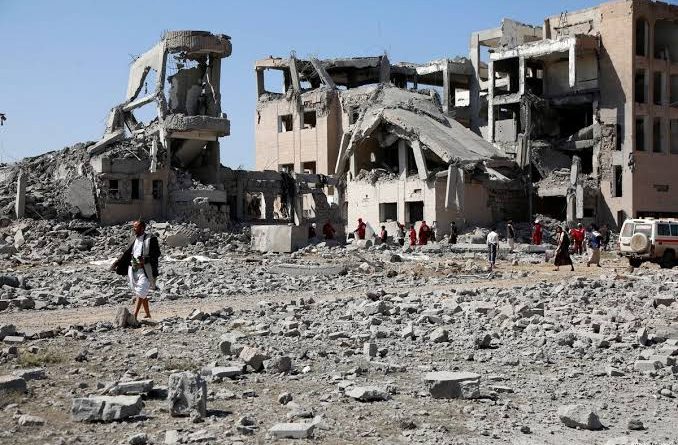
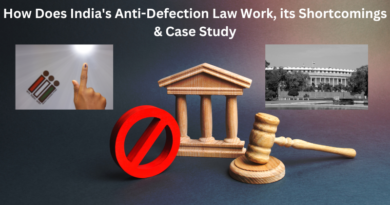
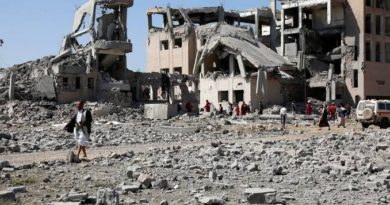
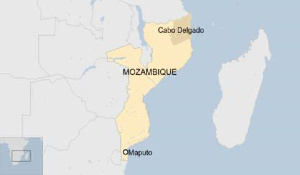
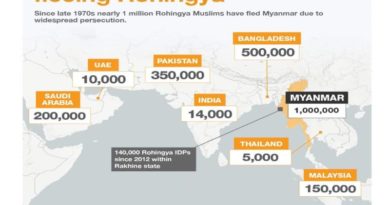
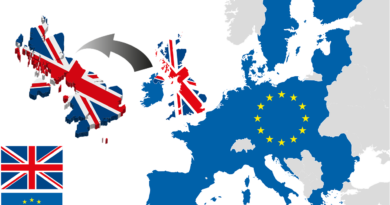


Like!! Great article post.Really thank you! Really Cool.
Thank you again! We really appreciate it.
Your place is valueble for me. Thanks!…
Thanks a lot!